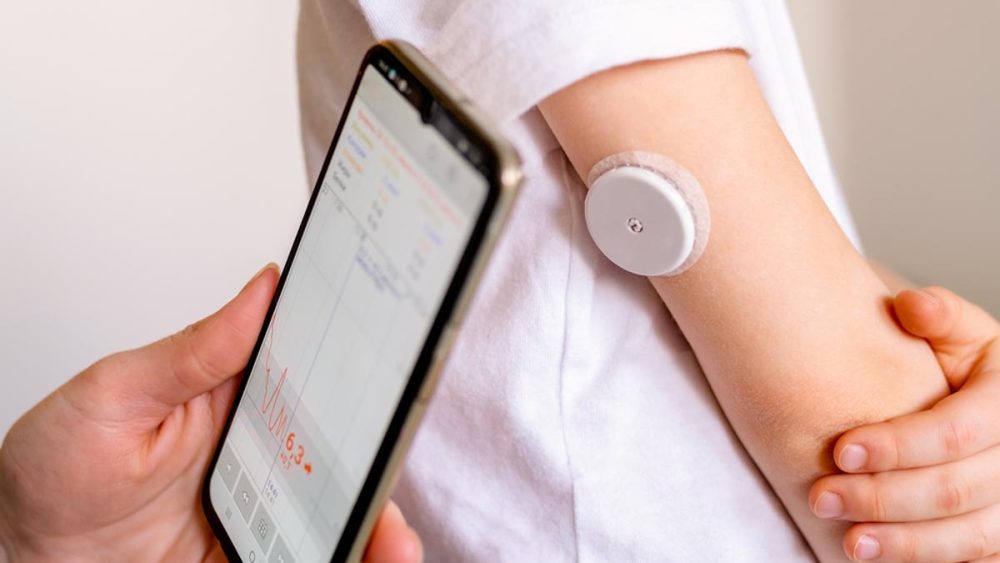Youth and young adults with type 1 diabetes tended to have better blood glucose control if they used real-time continuous glucose monitoring (CGM) as well as an insulin pump, compared with using intermittently scanned CGM or multiple daily insulin injections, according to a new study published in the journal JAMA Network Open.
Previous studies have shown that real-time CGM has many potential benefits in people with diabetes. It has been shown to help reduce hospitalizations in people with type 1 or type 2 diabetes, including reducing emergency department visits for low blood glucose. Even for people with type 2 diabetes who don’t take insulin, CGM has been shown to help improve A1C levels (a measure of long-term blood glucose control). In recent years, CGM use has skyrocketed among young people with type 1 diabetes, but the technology may pose problems for many older adults.
For the latest study, researchers looked at a group of 5,219 children, adolescents, and young adults (under age 21) with type 1 diabetes from 21 different countries. The researchers were interested in whether certain modes of glucose monitoring or insulin delivery were linked to better glucose control, as shown by different blood glucose targets. Only people who used intermittently scanned CGM or real-time CGM were included in the study — people who used traditional “finger-stick” glucose meters were not — because both forms of CGM allow glucose trends over time to be recorded. CGM data for at least six months was provided to the researchers between January 2016 and December 2021. The median age of participants was 14.4, and 52.0% were male.
To get cutting-edge diabetes news, strategies for blood glucose management, nutrition tips, healthy recipes, and more delivered straight to your inbox, sign up for our free newsletters!
Real-time CGM, insulin pump use linked to highest time in range
After adjusting for participants’ age, sex, diabetes duration, and body-mass index (BMI, a measure of body weight that takes height into account), the researchers found that the proportion of participants who spent at least 70% of their time in the recommended blood glucose range was highest among those who used real-time CGM and an insulin pump (36.2% of these participants). The next highest proportion of participants with at least 70% of time in range was seen in those who used real-time CGM and insulin injections (20.9%) followed by those who used intermittently scanned CGM and insulin injections (12.5%) and finally those who used intermittently scanned CGM and and insulin pump (11.3%).
Similar trends among the four groups were seen when the researchers looked at different outcomes, including spending less than 25% of the time above the target glucose range and less than 4% of the time below the target glucose range. The adjusted average proportion of time in range for real-time CGM and insulin pump users was highest as well, at 64.7% of the time. Using real-time CGM and an insulin pump was also linked to lower risks for severe hypoglycemia (low blood glucose) and diabetic ketoacidosis (DKA, a medical emergency characterized by high blood glucose and ketones in the blood and urine).
“These results highlight the meaningful clinical impact of concurrent real-time CGM and insulin pump use in this population, which frequently struggles to achieve recommended glycemic targets,” the researchers wrote, adding that their findings “underscore the synergistic effect of advanced diabetes technologies that should be more readily available to youths with type 1 diabetes for further improvement of diabetes-related clinical outcomes.”
Want to learn more about raising a child with type 1 diabetes? Read “The Type 1 Diabetes Diagnosis,” “Type 1 Diabetes at School: What Personnel Need to Know,” “Helping a Student-Athlete With Type 1 Diabetes,” and “Type 1 Diabetes and Sleepovers or Field Trips.”
Living with type 1 diabetes? Check out our free type 1 e-course!

